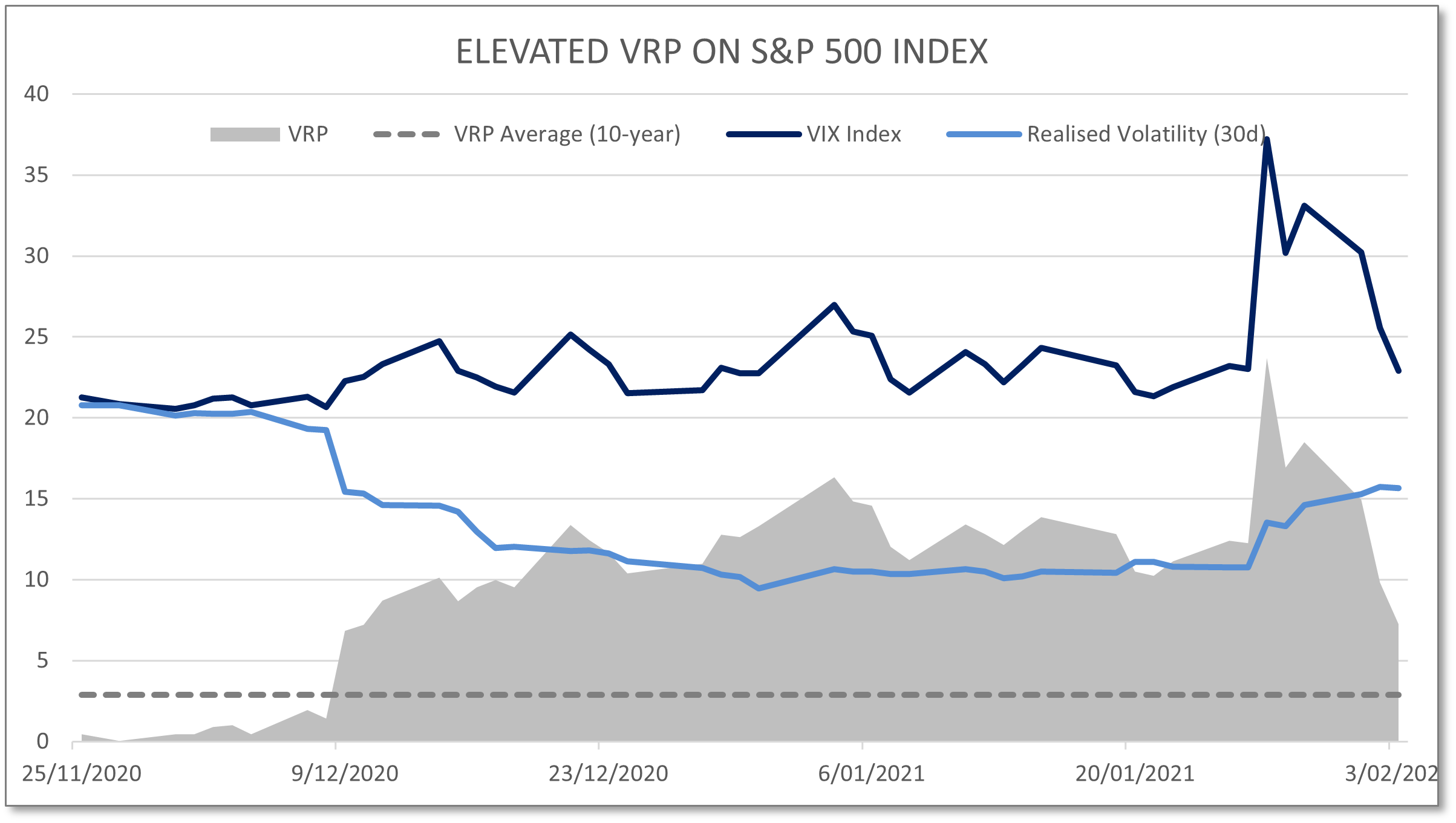For income, option selling conditions rarely better
For investors seeking income, now may be the time to consider systematic option-selling strategies such as a BuyWrite. Current market conditions in the US have rarely been better.
Market volatility in the US (measured by the VIX Index) has hovered around 25 since May 2020, as the stock market recovery got fully underway. When an option is sold, this elevated volatility (Implied Volatility) is reflected in elevated option prices, meaning income is enhanced during these periods. Implied Volatility is a forward-looking measure of expected future volatility.
Alongside this elevated volatility, the actual observed risk in share prices has been declining. This is measured by Realised Volatility and is a backward-looking or historical measure.
When Implied Volatility persists at elevated levels but Realised Volatility declines, option sellers are generally being over-compensated for the risks they are assuming. This spread between Realised and Implied volatility is known as the Volatility Risk Premium (VRP). VRP has proven to be a pervasive and consistently positive source of return over time, although it can wax and wane with different market conditions.
Over
the last 10 years, the VRP calculated on this basis has averaged around 3 points. This premium represents a consistent overpayment by option buyers and explains
why systematic option selling strategies have generated consistently high risk-adjusted
returns. However, in the past few months since the wrapping up of the US
Federal election in late November, VRP has widened and is currently more than
2x the long-term average.

Source: Bloomberg
Reasons for the elevated VRP include:
- Massive increases in single-stock call buying, driven primarily by retail investors buying upside. Single-stock call option volumes have increased 400% versus 3 years ago and there are now more single-stock option contracts trading than shares on the S&P 500 (Source GS).
- Historically, elevated VIX levels have persisted long after risks have passed. Similar to insurance, elevated prices for options have remained in place long after the event that caused the spike in volatility.
It is unusual for the VIX Index to remain this elevated, some 30% above long-term averages, when markets are also approaching all-time highs. Looking forward, we believe it is likely that the VIX is likely to fall, or actual risk in the equity market will rise. Either way, in the current environment there appears elevated income available from systematic option-selling strategies versus being invested within equities alone.
As
an aside, we also reviewed the VRP in the Australian market. While healthily
positive, the current return premium appears consistent with long-term averages. This difference may be due to inconsistencies in demand for call options here versus the US. It may also be caused by Australia's lack of emerging retail trading platforms such as Robinhood.
Not already a Livewire member?
Sign up today to get free access to investment ideas and strategies from Australia’s leading investors.
3 topics

